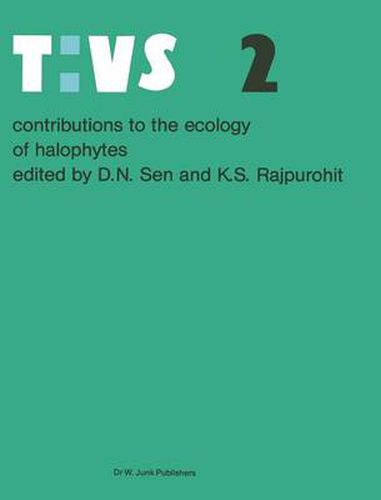Readings Newsletter
Become a Readings Member to make your shopping experience even easier.
Sign in or sign up for free!
You’re not far away from qualifying for FREE standard shipping within Australia
You’ve qualified for FREE standard shipping within Australia
The cart is loading…






This title is printed to order. This book may have been self-published. If so, we cannot guarantee the quality of the content. In the main most books will have gone through the editing process however some may not. We therefore suggest that you be aware of this before ordering this book. If in doubt check either the author or publisher’s details as we are unable to accept any returns unless they are faulty. Please contact us if you have any questions.
The ecology of halophytes has a wide scope of interest, appealing to people of many disciplines. It covers widely different fields such as climatology, soil science, phytogeography, adaptive biology and agriculture. Ecologists study these specialized plants in relation to estuarine ecosystems, biology of dominant genera, germination ecology, water relations, salt secretion, and senescence. The present volume is divided into three parts and attempts to elucidate new aspects of the problems faced by this special group of plants. It tries to give the reader an overall view of saline environments and the ecology of plants found therein. In the first chapter of part one Zahran presents the halophytic vegetation of Egypt, which includes the inland and the littoral (Red Sea and Mediterranean Sea) salt marshes. The plants he describes have been classified as succulents, excretives and cumulatives, according to their adaptability to saline soils and according to their different life-forms. The second chapter throws light on the estuarine ecosystem ofIndia. The estuaries are described by Joshi, and Bhosale as being rich in diversity of mangrove species. Making varied use of estuarine ecosystems is not only possible, but also essential because they are the meeting point between terrestrial and marine life.
$9.00 standard shipping within Australia
FREE standard shipping within Australia for orders over $100.00
Express & International shipping calculated at checkout
Stock availability can be subject to change without notice. We recommend calling the shop or contacting our online team to check availability of low stock items. Please see our Shopping Online page for more details.
This title is printed to order. This book may have been self-published. If so, we cannot guarantee the quality of the content. In the main most books will have gone through the editing process however some may not. We therefore suggest that you be aware of this before ordering this book. If in doubt check either the author or publisher’s details as we are unable to accept any returns unless they are faulty. Please contact us if you have any questions.
The ecology of halophytes has a wide scope of interest, appealing to people of many disciplines. It covers widely different fields such as climatology, soil science, phytogeography, adaptive biology and agriculture. Ecologists study these specialized plants in relation to estuarine ecosystems, biology of dominant genera, germination ecology, water relations, salt secretion, and senescence. The present volume is divided into three parts and attempts to elucidate new aspects of the problems faced by this special group of plants. It tries to give the reader an overall view of saline environments and the ecology of plants found therein. In the first chapter of part one Zahran presents the halophytic vegetation of Egypt, which includes the inland and the littoral (Red Sea and Mediterranean Sea) salt marshes. The plants he describes have been classified as succulents, excretives and cumulatives, according to their adaptability to saline soils and according to their different life-forms. The second chapter throws light on the estuarine ecosystem ofIndia. The estuaries are described by Joshi, and Bhosale as being rich in diversity of mangrove species. Making varied use of estuarine ecosystems is not only possible, but also essential because they are the meeting point between terrestrial and marine life.